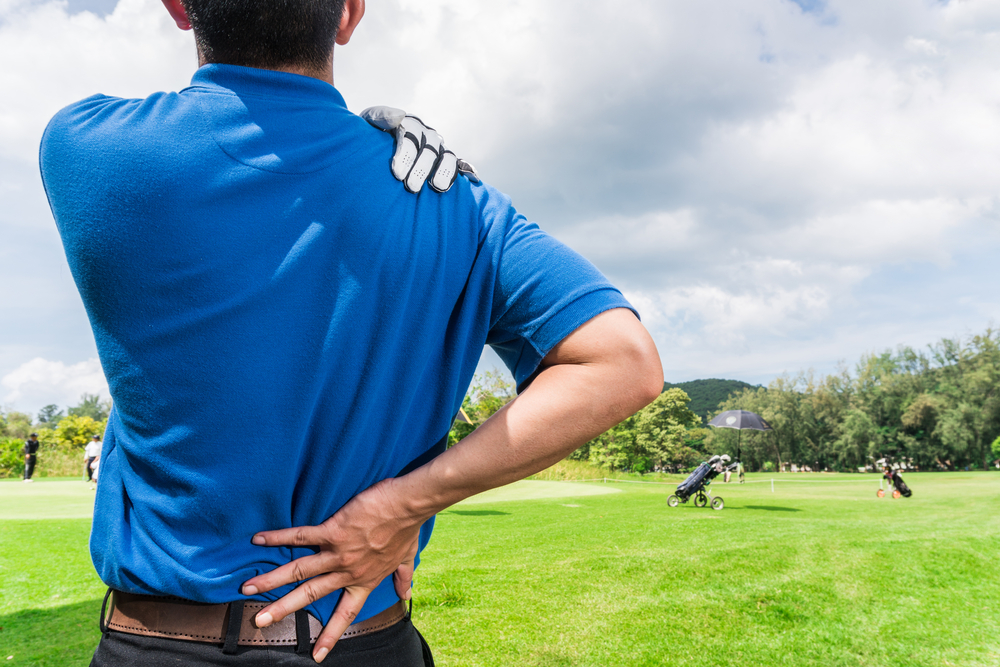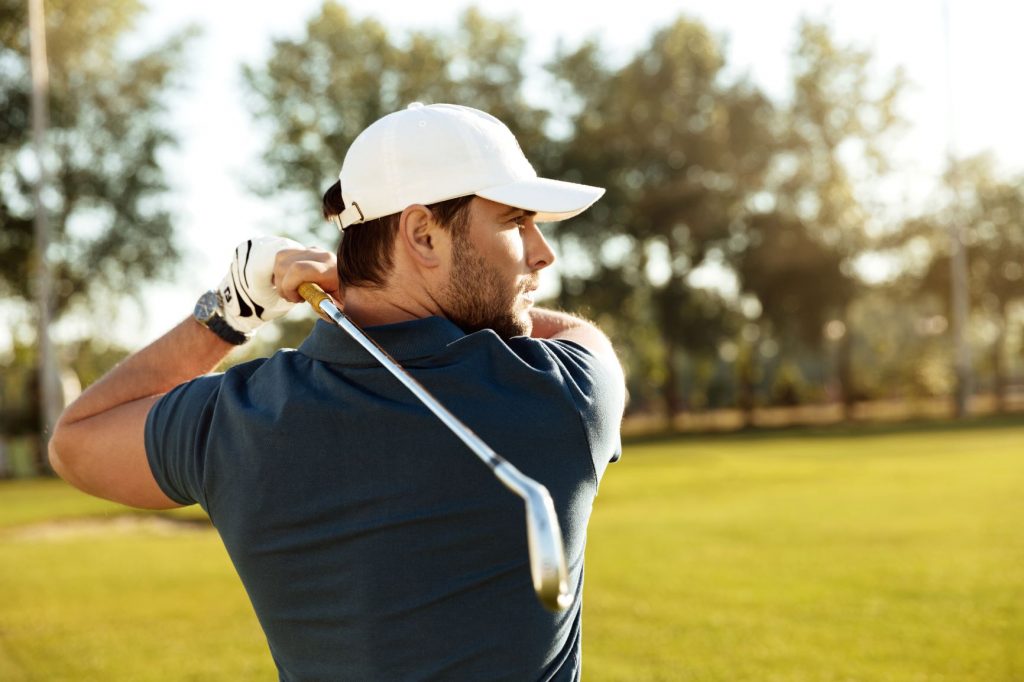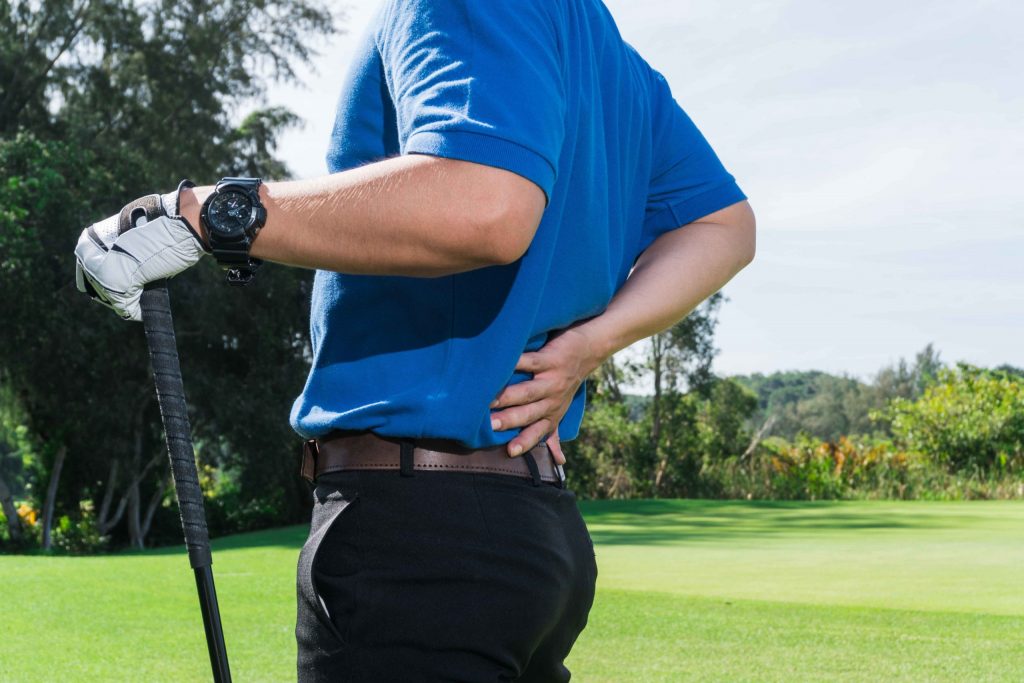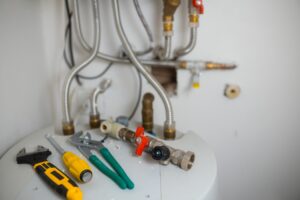Benefits Of Massage For Golfers

Golf massage, sometimes called “massage for golfers,” is a type of massage treatment that is designed to meet the needs and solve the problems of golfers. The goal of this type of exercise is to increase range of motion, loosen up tight muscles, and improve golf play generally. Due to the strong force and repeated movements that make up the golf swing, golfers often have sore and stiff muscles. A regular golf massage can help ease muscle pain, stop muscle cramps, and lower the risk of getting hurt. Golf massage can make muscles more flexible and improve the quality of movement by focusing on the muscles used in the swing, like the hip flexors and rotator cuff muscles. This type of treatment also improves blood flow, brings oxygen to the blood, and gets rid of cellular waste from the muscles. This helps players heal faster and do their best. Overall, golf massage is a good way to get better at both the mental and physical parts of the game.
Benefits of Golf Massage
Golf massage has many advantages that can improve a golfer’s game and general health. One great thing about golf massage is that it can help keep you from getting hurt. Massage treatment on a regular basis can help you find and fix muscle issues, which lowers your risk of strains, muscle cramps, and other common golf-related injuries.
Golf massage not only keeps you from getting hurt, but it also makes your balance better. It works on the muscles that help you keep good posture, which helps you stand more straight and balanced during your golf swing. A better stance can help golfers make a stronger and more efficient swing.
Golf massage also broadens the range of motion and flexibility, enabling players to produce a bigger swing circle and a smoother action. The clubhead then moves faster, which leads to longer distance.
Golf massage also eases pain by working on tight muscles, releasing trigger points, and making muscles less sore. It also improves circulation, sending fresh blood to muscles and getting rid of waste products from metabolism. This helps players heal faster and build muscle stamina.
In addition to being good for your body, golf massage can also help you concentrate better. With massage treatment, you can relax and feel less stressed, which can help you focus. This can help golfers stay mentally sharp and do their best on the course.
Types of Massage for Golfers
If you play golf, massage treatment can really help you improve your game and keep you from getting hurt. Golfers can get different kinds of massages that are designed to meet their needs. Deep tissue massage, sports massage, and Swedish massage are all types of massage that players often get. The lower layers of muscles are worked on by deep tissue massage, which helps to relax muscles and ease pain. Shoulders, hips, and lower back are some of the areas that sports massage focuses on because they are often hurt by overuse and repeated movements. Swedish massage is a softer type of massage that helps you rest and gets more blood flowing to your muscles. There are different kinds of massage that can help players in different ways, and a mix of these types can be used to meet specific needs and goals. The right kind of massage can greatly improve a golfer’s performance and general health, whether it’s by loosening up tight muscles, increasing range of motion, or helping them relax and concentrate.

Swedish Massage
Swedish massage is a common type of leisure treatment that gets rid of stress and tightness in the muscles. It is known for improving circulation and moving range because of its gentle, flowing style.
To reach these goals, different methods are used during a Swedish massage. Some of these methods are long, flowing strokes that help the blood flow and ease, and deep finger pressure that targets areas of stress. A deep state of rest is the main goal, along with getting rid of any knots or tight muscles that may be there.
When you get a Swedish massage, these techniques are used together to help your muscles feel better and get rid of biological waste and toxins. Swedish massage is good for your health because it improves circulation and brings more fresh blood to your cells.
Swedish massage can help you whether you are a serious player who wants to improve your range of motion or just someone who wants to relax after a long day on the course. Because it focuses on relaxing and circulation, it’s a great choice for people who want to relax, ease muscle tightness, and de-stress. Today, give yourself a Swedish massage and feel the relaxing benefits of this healing method.
Deep Tissue Massage
As a form of therapy, deep tissue massage focuses on easing tightness that builds up in the lower layers of muscle and connective tissue. Deep tissue massage is different from Swedish massage in that it focuses on the deeper layers of muscle. Swedish massage is more on the top layers of muscle.
The professional uses slow strokes and deep finger pressure during a deep tissue massage to get to the tight spots below the skin. The fibers in muscles, tendons, and ligaments can get tangled and tight over time. This method helps to straighten them out. Firm pressure and slow strokes help the therapist get to the deeper layers of muscle and release any stress that has built up.
In deep tissue massage, the finger pressure can be very strong, but it is necessary to help people who have long-term problems with their muscles and joint tissues. This method increases blood flow to the hurt area, which brings oxygen and other important nutrients to the muscles and helps them heal and recover.
Deep-tissue massage can help improve range of motion, ease muscle pain, and make muscles more flexible in addition to relieving chronic stress. It is especially helpful for people who have ongoing problems with their muscles, joints, or skeletal system, or who do things over and over again that can make their muscles tight and stiff.
Overall, deep tissue massage is a focused way to work on tightness and stress that are deeply rooted in the body. This type of massage focuses on releasing long-term stress in the lower layers of muscle and connective tissue. It can help with a lot of pain and make you feel better overall.
Sports Massage
Golfers can improve their ability and avoid injuries on the field by getting sports massages. Golfers have unique needs that can be met by this type of massage, which includes deep muscle treatment and focused stretches.
One of the best things about sports massage for golfers is that it can help them heal faster. The stress that golf swings put on the body can lead to muscle soreness, tightness, and even overuse injuries. Sports massage increases blood flow to the muscles, bringing oxygen and important nutrients to them to help them heal.
Also, sports massage can keep you from getting hurt again by making you more flexible and improving your range of motion. For golf, the body needs to have a lot of force, which can make joints stiff and throw off your posture. Sports massage helps loosen up tight muscles and make muscles more flexible by using deep tissue treatment and focused stretching. This lowers the risk of injury.
Restorative sports massage is also an important part of getting the body ready for exercise. Golfers can get better muscle function and movement quality by increasing blood flow and easing muscle strain. This will help them do better on the golf field.
In conclusion, sports massage is helpful for golfers because it helps them avoid injuries, heal faster, and become more flexible. Getting healing sports massage and using methods like deep muscle manipulation and focused stretching can help players stay in great shape and improve their game.
Trigger Point Therapy
Trigger Point Therapy is a very good way to work on trigger points, which are specific areas of tight muscles used in golf massage. These trigger points are knots or areas of high muscle stress that are localized and can hurt and make it hard to move. Golf massage professionals can ease pain, make muscles more flexible, and improve general performance on the golf course by applying focused pressure to these trigger spots.
Golfers can get pain relief and muscle ease from trigger point therapy. Muscle cramps and pain can be caused by the repeated movements of a golf swing. Therapists can find trigger points in these muscles and work on them to relieve stress and stop cramps. This can help golfers move more freely and feel less pain.
Trigger point treatment also gets to the root cause of muscle tightness, which makes it a good method for golf massage. By working on the areas where muscles are overly tight, therapists can effectively relieve stress and make muscles more flexible generally. In turn, this can help the golfer’s range of motion and make their swing smoother and stronger.
When Trigger Point Therapy is used in golf massage, it can be very helpful for golfers. This method helps ease pain, stop muscle twitches, and make muscles more flexible by focusing on and releasing trigger points. In turn, this can help the player do better overall and avoid getting hurt from doing the same things over and over again in their game.
Conditions Helped by Golf Massage
Golf massage can help ease and treat a variety of conditions that are frequently experienced in the sport, and it can be beneficial to players of all skill levels. One of these conditions is muscle tightness and stiffness, which can happen from doing the same movements over and over again in a golf swing. Deep tissue massage is one type of massage treatment that can help relax muscles and increase their range of motion without causing pain. Regular players may have posture and muscle issues that can be fixed with a golf massage. This can help lower their risk of injury. Golf massage can help golfers improve their form and the way they move on the course by focusing on areas where muscles are tight and making muscles more flexible. Also, getting massages regularly can help golfers deal with sore muscles and tiredness, which lets them keep up their best game and enjoy it to the fullest. Individuals who play golf can improve their physical health and improve their game by including golf massage in their regular training routine.

Muscle Spasms
For golfers, muscle cramps are common, especially because they swing their clubs over and over and hold themselves in bad positions all the time. Spasms are twitches of muscles that you don’t want to happen. They can hurt, be uncomfortable, and limit your range of motion.
When you play golf, making the same swing movements over and over can put a lot of stress on your muscles, making them tired and tight. Muskele are more likely to spasm when they are tired. Also, bad poses during the swing can put stress on the muscles and joints, which makes the risk of cramps even higher.
Muscle cramps can make it hard to play golf. They can get in the way of the swing’s smooth motion, which makes it harder to hit the ball hard and control the club. This could lead to less precision and less distance. Muscle cramps can also make it hard for a player to keep their swing steady, which can hurt their general form and efficiency.
In addition to making it harder to do things, muscle cramps also make it more likely that you will get hurt. There is a chance that muscles will tighten quickly and strongly during a spasm. This can put stress on the muscles and cause tears or sprains. These injuries can make it hard for golfers to play, and they might need to take some time off to heal.
Golfers may also have problems with their necks in addition to muscle pain. Conditions like stiff neck, neck pain, and cervical radiculopathy can be in this group. These diseases can happen because of the repeated movements and spinning forces that are created by the swing. Golfers who have problems with their necks may feel pain, stiffness, and a limited range of motion in the neck area.
Golfers can benefit from regular massage treatment to help ease muscle cramps. Deep tissue massage and sports massage are two types of massage that can help loosen up tight muscles, improve flexibility, and speed up the flow of blood and cellular waste. Getting a massage from a professional can not only ease muscle cramps, but it can also lower the risk of future injuries by making muscles stronger and improving the way they move.
Muscle Pain and Soreness
Golfers often report of sore and painful muscles, which are often caused by the repeated actions and overuse injuries that come with the sport. The repeated action of hitting a club in golf strains muscles, making them tired and tense. This can make muscles hurt and sore, which can affect how well a player does on the field.
Getting a golf massage regularly can help a lot with muscle pain and soreness. Massage therapists can help golfers with pain by focusing on specific muscle groups. This can help improve flexibility and range of motion. Deep tissue massaging methods can be used to get rid of muscle knots and stress, which can help you rest and feel less pain.
Not only can a daily golf massage help with pain and soreness, it can also lower the risk of getting hurt again. Golfers are less likely to get overuse injuries if they can make their muscles more flexible and loose. Massage can also improve blood flow and help the body get rid of waste products, which can help you heal faster and lower your risk of getting hurt.
The rotator cuff muscles, hip flexors, and neck muscles are some of the most common muscles that hurt while playing golf. Massage therapists can help players who are in pain or soreness by focusing on certain areas and using methods like trigger point treatment, myofascial release, and stretching.
According to research, giving golfers regular massages can have a big effect on their health and how well they do on the course. Golf massage is a great way for players to enjoy the game without pain or restrictions by relieving sore and painful muscles, making muscles more flexible, and lowering the risk of future injuries.
Stiff Joints and Repetitive Movements
A regular golf massage can help players who have trouble with stiff joints and doing the same things over and over again. Golf involves moving the club over and over again, which can make joints stiff and limit their range of motion over time. Therapists can help joints move more freely and feel less stiff by focusing on certain muscle groups and using specialized massage methods. This can make your golf game better and more effective.
Massage methods like deep tissue massage, trigger point treatment, and stretching can be used in golf massage to help loosen up tight muscles and make joints more flexible. So, you can make your golf swing smoother and easier, which is better for your body and your general performance on the course.
Shoulders, hips, and lower back are some of the most common body parts that get stiff from playing golf over and over again. During the swing, these areas are used a lot. Getting massages regularly can help relieve stress and improve joint motion in these areas.
By adding regular golf massage to their routine, golfers can not only deal with present problems like pain and limited joint movement, but they can also avoid future injuries and improve their general golf performance. Golfers can get a better swing and enjoy the game more comfortably and effectively if their joints are lighter and more flexible.
Metabolic Waste Accumulation
Golfers worry about metabolic waste buildup because they make the same moves over and over and put in a lot of effort. Some of these things can cause cellular waste, like lactic acid, to build up in the muscles.
In golf, players often hit the ball by repeatedly hitting their clubs and using force and power. When you work out hard like this, your muscles get stressed, which makes lactic acid as a waste product of energy consumption. Lactic acid can build up in muscles, making them tired, sore, and less able to do their job.
Metabolic waste can make muscles less effective, which can make it harder for a player to generate power and keep good form throughout the game. High amounts of lactic acid can make you tired, which can make your muscles weaker, less durable, and less coordinated. In turn, this raises the risk of getting hurt.
Regular massage treatment can be very helpful for players who are building up cellular waste. Massaging the muscles deeply and increasing blood flow are two ways that massage helps get rid of cellular waste. This not only helps your body heal, but it also lowers your risk of getting hurt or tired muscles.
Metabolic Waste Accumulation
Aside from the physical demands of the golf swing, serious players can also get posture problems that make their game worse. Because the swing is done over and over, it can cause these imbalances. This can make some muscles work too hard and others not hard enough, which can lead to bad posture.
Massage treatment is one of the best ways for players to fix these posture problems. Massage treatment can help loosen up tight muscles and strengthen weak ones by focusing on certain groups of muscles. This can lead to better balance and alignment. This could have a big effect on how well a golfer does.
The trunk is a place where players often have problems with their posture. Back and chest muscles that are too tight can cause bowed shoulders and a hunched back, which can make it hard for a player to produce power and keep a straight swing.
In players, the hips are another place that can become out of balance. Tight hip flexors, which are common in those who sit for long periods or have a sedentary lifestyle, can restrict hip mobility and negatively affect the golfer’s ability to rotate the hips effectively during the swing.
Lastly, the shoulders can also be affected by postural imbalances in golfers. Rounded shoulders and tight muscles in the upper back can limit the golfer’s range of motion and compromise their ability to achieve the desired swing plane.
Risk of Injury in Avid Golfers
Avid golfers put their bodies through repetitive and powerful movements, making them highly susceptible to the risk of injury. The golf swing involves a complex coordination of muscles and joints, placing strain on various parts of the body. This repetitive motion can lead to muscle fatigue, tightness, and soreness. The risk of overuse injuries, such as muscle strains, tendonitis, and stress fractures, is also higher for avid golfers. Additionally, the powerful torque generated during the swing increases the risk of elbow injuries, such as golfer’s elbow. Without proper care, these injuries can worsen over time and hamper one’s golf game. However, avid golfers can mitigate this risk by incorporating regular massage therapy into their routine. Massage techniques such as deep tissue massage and sports massage can help reduce muscle tightness, improve range of motion, and increase blood flow to facilitate the healing process. By addressing these risk factors, avid golfers can enjoy their game with reduced chances of future injury.
Powerful Torque and Impact on Muscles Risk Factors for Developing Injury
Golf is a sport that requires powerful torque and impact on the muscles during the swing, which can increase the risk of injury for avid golfers. The rotational forces generated by the swing can place immense stress on muscles, joints, and tendons, making them more prone to strains, tears, and overuse injuries.
The repetitive motion involved in swinging a golf club further contributes to these risk factors. A golfer may repeatedly swing the club hundreds of times during a single round, leading to muscle fatigue, tightness, and decreased muscle flexibility. Over time, this can cause imbalances in muscle strength and flexibility, which can exacerbate the risk of injury.
Addressing these risk factors is crucial in preventing future injuries. Regular massage therapy can help alleviate muscle tightness, improve range of motion, and increase blood flow to the muscles. Deep tissue massage and other forms of massage for golfers can specifically target muscle soreness and improve muscle flexibility, reducing the chance of injury.
By incorporating massage techniques into their routine, golfers can enhance the quality of their movement and reduce the risk of developing overuse injuries. Massage therapists can apply firm pressure to break down adhesions, release tension, and improve muscle function. This can help golfers achieve a more fluid and efficient swing, ultimately enhancing their performance on the course while minimizing the risk of injury.
Conclusion
In conclusion, massage therapy plays a crucial role in the treatment and prevention of common injuries in golfers. By addressing muscle tightness, improving flexibility, and increasing blood flow to the muscles, regular massages can help alleviate the risk factors associated with the repetitive nature of the golf swing. Incorporating deep tissue massage and other specialized techniques for golfers can specifically target muscle soreness and improve overall muscle flexibility, reducing the chance of injury.





